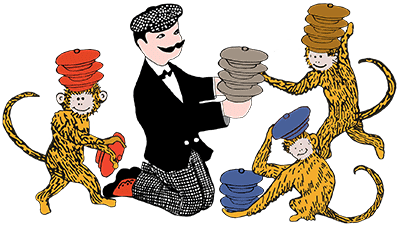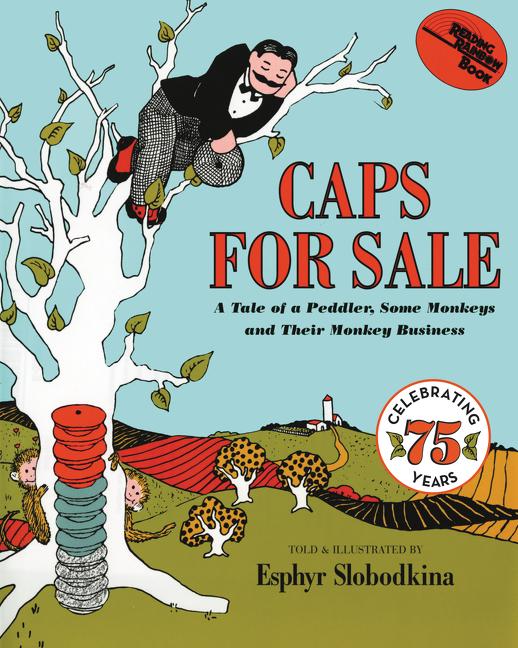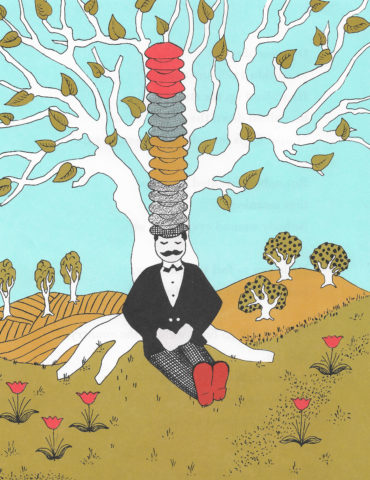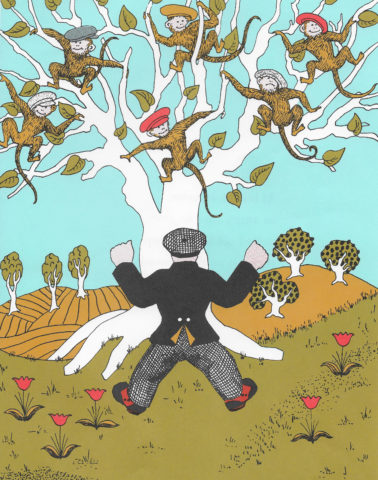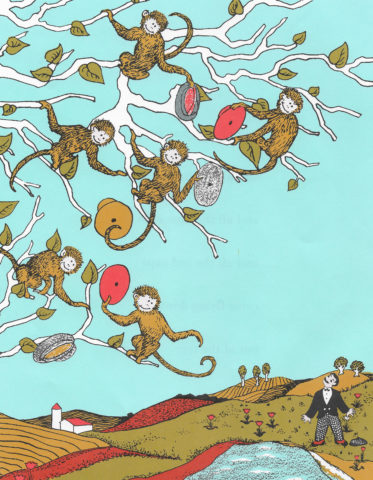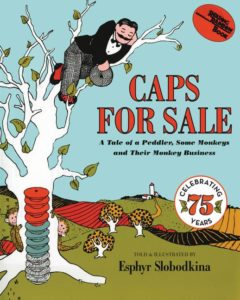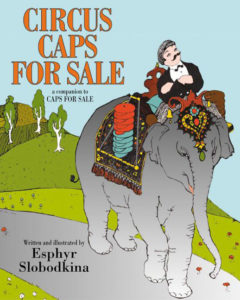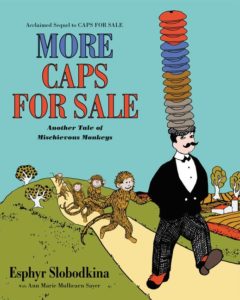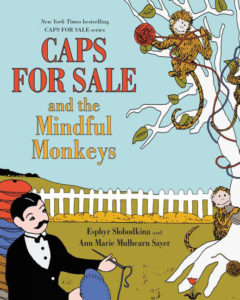Caps for Sale
A Tale of a Pddler, Some Monkeys, and Their Monkey Business
By Esphyr Slobodkina, Illustrated by Esphyr Slobodkina
Caps for Sale was originally published in 1940. Author Esphyr Slobodkina, noted abstract artist of the twentieth century, produced the illustrations for the story using collage.
The technique of collage had not been a medium of choice in American children’s books at that time with the exception of Slobodkina’s previous illustrations fashioned for Margaret Wise Brown in the “Big/Little” series. (Slobodkina’s The Little Fireman {1938} was the first American picture book to be rendered in cut-paper collage. It remains a touchstone work of picture-book art and design.)
Lacking stories to keep Slobodkina sufficiently employed, employer Brown suggested Slobodkina try her hand at writing text. In search of a topic, Slobodkina recollected a yarn a cousin had heard in her son’s classroom about a traveling peddler and monkeys. Slobodkina researched the story in the New York Public library and elsewhere for over two years. Finding nothing published, Slobodkina told and illustrated the tale her own way.
Caps for Sale won a Lewis Carroll Shelf Award in 1958. It was included as one of five stories on the 1986 VHS release Five Stories for the Very Young from Weston Woods Studios, animated using illustrations from the book. A remake was released on Weston Woods's 2007 collection Picture Book Classics on DVD, narrated by Rex Robbins.
In the 1960s-90s it was translated into Swedish, Danish, Hebrew, French, Chinese/Complex, Afrikaans, Japanese, Xhosa, Spanish, and Korean.
A tribute to its merits as a useful instrument to learning was emphasized in 2014, when Caps for Sale (one of only 46 books) was chosen by the Ministry of Education in Timor-Leste for inclusion in the diminutive libraries of each school. Timor-Leste is a tiny country in Southeast Asia with no tradition of written language or book-trade.
Since 2016 new translations include Tunisian, Thai, Romanian, and Chinese (simplified) and Russian.
Over six million copies of Caps for Sale have been sold over the decades. According to a Publisher’s Weekly poll done in 2003, one in three Americans knew the book at that time.
Synopsis
"Fifty cents a cap!” calls out the Peddler as he walks carefully up and down the streets, balancing a huge pile of caps on top of his head.
But when the Peddler goes out into the country, he unwisely takes a nap, leaning against a tree, with the caps still balanced on his head. While he is asleep, a band of mischievous monkeys steals every one of his caps, except for his own checked cap.
When he wakes up, his efforts to get his caps back again make this a classic story in the great folktale tradition.
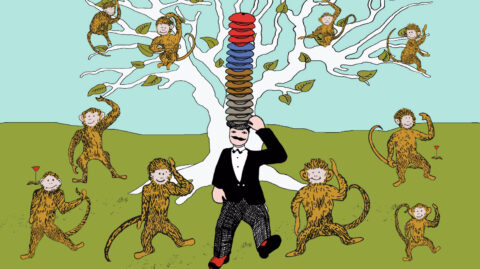
Lesson Plans for Caps for Sale
Preschool
PK-01 - Act it Out
This lesson can be simplified for younger children to focus around mimicry or increased in complexity for students who are ready to identify words in a text.
PK-02 - Put the Caps on the Monkeys
This lesson can be differentiated by providing students with a single monkey and a single cap or by providing them a more detailed picture with multiple monkeys and multiple caps.
PK-03 - Color a Cap
This lesson can be modified for early preschoolers.
Kindergarten
K-01 - Getting to Know a Book
This lesson serves as a good pre-reading activity for Caps for Sale.
K-02 - Counting Caps
This lesson can be modified by choosing a different illustration in the book to count.
K-03 - Connect the illustration to the text
This lesson can be replicated or increased in complexity using other illustrations from the story.
First Grade
GR1-01 - Landscape Collage
This lesson can be run before or after reading the story Caps for Sale; however, the lesson assume that the teacher will read the story to the students after they complete their art.
GR1-02 - Pezzo's Dreams
This lesson is designed to draw on students’ creativity. It can be differentiated depending on student writing and verbal abilities.
GR1-03 - Pin the Cap on the Monkey
Although this lesson does not align with Common Core academic standards for Grade 1, it is an exercise in teamwork.
Second Grade
GR2-01 - What Makes a Story
Students work independently or with a partner to complete their story map. Students can also jigsaw pieces of the story map organizer.
GR2-02 - Read to a Friend
This lesson is best done over the course of a few classes while studying the book. Students in the second-grade class should be comfortable reading the text prior to working with their listeners.
